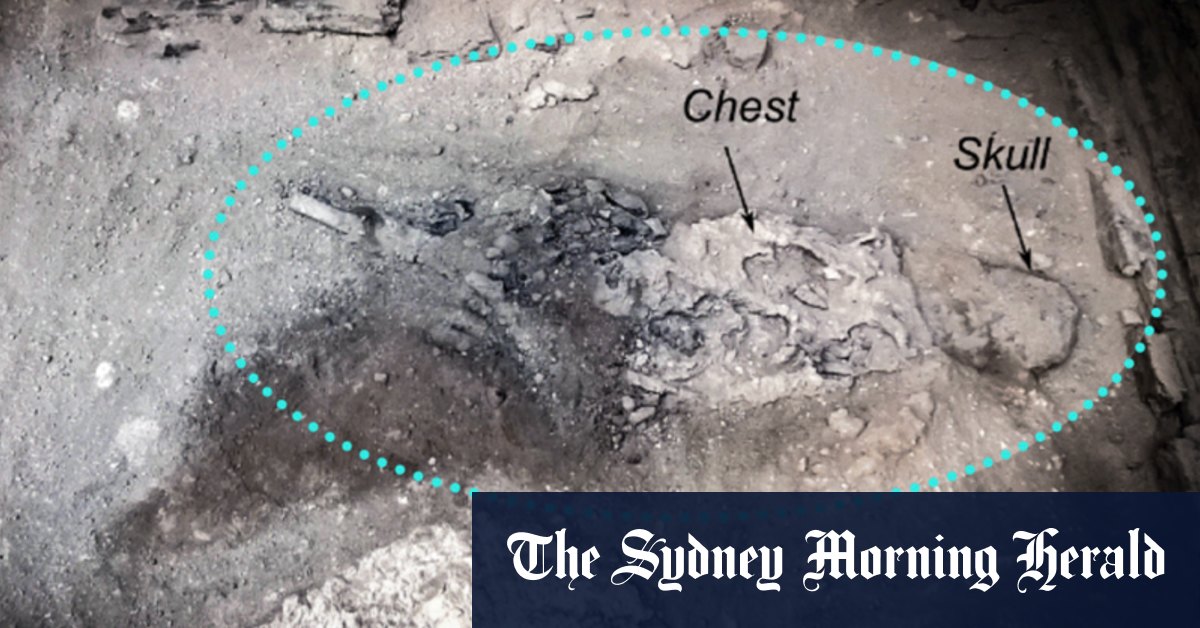Australia
Human brain turned to glass by volcanic eruption

The Discovery of a Vitrified Brain: Unveiling the Past
In the ancient town of Herculaneum, a remarkable archaeological discovery has shed new light on the devastating effects of the Mount Vesuvius eruption in AD 79. Amidst the ruins, researchers found a young man’s brain turned into black glass, a phenomenon known as vitrification. This extraordinary find reveals the intense heat and rapid cooling that occurred during the eruption, providing a unique glimpse into the tragic fate of the town’s inhabitants. The victim, believed to be a guardian in the cult of Emperor Augustus, was found face-down in his bed, his remains preserved in a college building dedicated to the emperor. This discovery not only astonishes with its scientific marvel but also deepens our understanding of the eruption’s ferocity.
The Science Behind the Vitrification Process
The transformation of brain tissue into glass is a rare and complex process requiring precise conditions. Vitrification occurs when tissues are exposed to extreme heat and then rapidly cooled, creating a glass-like structure. In this case, the heat from the volcanic ash cloud caused the brain’s water to evaporate quickly, while the skull and spine provided partial protection from complete destruction. This natural process preserved neurons and neurotransmitter proteins, offering scientists a rare opportunity to study ancient biological material. The discovered glass fragments resemble obsidian, a naturally occurring volcanic glass, highlighting the extraordinary conditions of the eruption.
Implications for Understanding the Eruption and Town’s Fate
The discovery challenges previous theories about the eruption’s impact on Herculaneum. Initially, it was believed that the town was buried under volcanic debris, but the vitrified brain suggests that a superheated ash cloud was the first lethal event. This cloud, moving at devastating speeds, would have caused instant death, preserving the town and its inhabitants in a tragic snapshot. The finding paints a clearer picture of the eruption’s phases, emphasizing the immediate and deadly effects of the ash cloud before the volcanic debris engulfed the town. This insight reshapes our historical narrative, illustrating the eruption’s rapid and merciless fury.
Advanced Methods in Analyzing the Vitrified Brain
To uncover the secrets of the vitrified brain, scientists employed advanced techniques such as X-rays and electron microscopy. These methods revealed the exact conditions necessary for vitrification, confirming the presence of preserved neurons and neurotransmitter proteins. The analysis debunked the idea that the pyroclastic flow alone caused the vitrification, as it lacked the required temperature and cooling rate. This interdisciplinary approach, combining archaeology with cutting-edge technology, underscores the importance of collaboration in unlocking historical mysteries. The meticulous analysis not only confirms the brain’s origin but also provides a model for future studies of ancient remains.
Historical Context of Herculaneum and Mount Vesuvius
Herculaneum, a coastal town near Pompeii, was buried under volcanic ash and pumice for centuries, preserving its ruins until excavation began in the 18th century. The eruption of Mount Vesuvius destroyed the town in mere hours, capturing the daily lives of its inhabitants in a dramatic freeze-frame. This disaster, while tragic, has become a valuable resource for understanding ancient Roman life. The discovery of the vitrified brain adds a poignant chapter to Herculaneum’s story, illustrating the human cost of natural disasters and the enduring impact of volcanic eruptions on history.
The Legacy and Impact of the Discovery
The vitrified brain serves as a poignant reminder of the eruption’s human toll, offering both scientific and emotional insights. Its study advances our knowledge of ancient life and death, providing a unique window into the past. This discovery not only deepens our understanding of Herculaneum’s fate but also highlights the importance of interdisciplinary research in archaeology. As a rare and significant find, the vitrified brain stands as a testament to the power of nature and the resilience of human remains, bridging the gap between past and present in an unforgettable manner.











